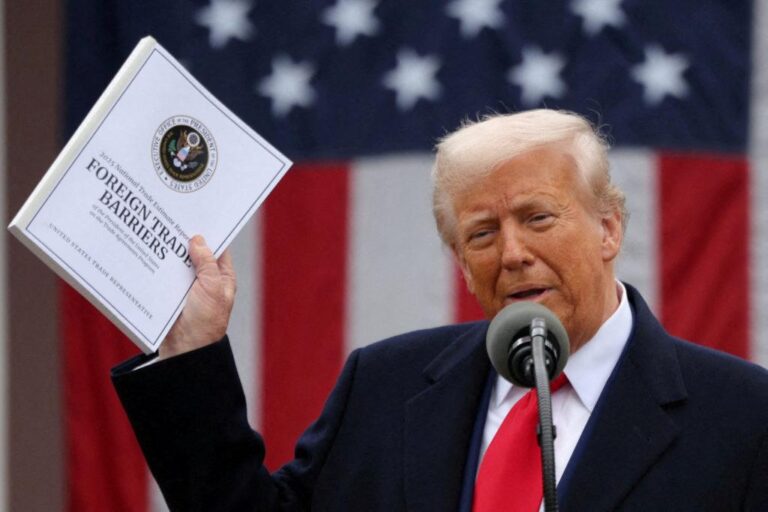In a dramatic escalation of trade tensions, the Trump administration has announced a 50% tariff on imports from India, targeting the country’s purchase of Russian oil. The move, widely seen as a punitive measure, underscores the growing rift between the two nations amid shifting geopolitical alliances. The new tariffs, reported by The Guardian, highlight Washington’s uncompromising stance against countries continuing economic ties with Moscow following Russia’s invasion of Ukraine. This development marks a significant turning point in U.S.-India relations, with potential ramifications for global trade and energy markets.
Trump escalates trade tensions with 50 percent tariff on Indian imports
In a bold move intensifying US-India trade relations, the administration has slapped a 50 percent tariff on a wide range of Indian imports. This unprecedented step is a direct response to New Delhi’s continued purchase of Russian crude oil amidst ongoing sanctions. The tariff targets multiple sectors, including textiles, pharmaceuticals, and electronics, signaling a significant escalation in economic pressure aimed at curbing India’s energy ties with Moscow. Industry experts warn that this could trigger supply chain disruptions and inflationary pressures in both economies.
The newly imposed tariffs encompass the following major categories:
- Textiles & Apparels: A 50% duty impacting $4 billion in exports annually.
- Pharmaceuticals: Crucial medicines now subject to increased costs.
- Electronics Components: Affecting bilateral tech trade significantly.
| Sector | Pre-Tariff Export Value | Estimated Impact |
|---|---|---|
| Textiles | $4B | Reduced demand, increased prices |
| Pharmaceuticals | $3B | Supply chain strain |
| Electronics | $2B | Slowed growth |
Impact of tariffs on Indo-US relations and global energy markets
The imposition of a 50% tariff on Indian goods by the United States marks a significant downturn in bilateral trade relations, triggered by New Delhi’s continued purchase of Russian oil amid ongoing sanctions. This punitive move has intensified diplomatic tensions between the two economic giants, signaling a sharp departure from the previously collaborative Indo-US partnership. Industry experts highlight that these tariffs not only threaten to disrupt supply chains but also compromise India’s strategic autonomy in sourcing energy. As trade barriers rise, several sectors, including pharmaceuticals, textiles, and information technology, face immediate risks of cost inflation and reduced market access in America.
Globally, this tariff escalation sends ripples across energy markets already grappling with volatility. Key consequences include:
- Price fluctuations: Increased demand uncertainty has fueled spikes in crude and refined product prices.
- Supply realignment: Countries are reassessing their oil procurement strategies to navigate geopolitical risks.
- Trade diversification: Exporters and importers alike are seeking alternative partners outside of traditional channels.
| Impact Area | Short-Term Effect | Potential Outcome |
|---|---|---|
| US-India Trade | Reduced exports | Shift to other markets |
| Global Oil Markets | Price volatility | Energy sourcing shifts |
| Energy Security | Heightened risks | Increased diversification |
Strategies for Indian exporters to mitigate tariff-related challenges
With the new 50% tariff imposed by the U.S. on Indian goods, exporters must swiftly adapt to circumvent escalating costs and maintain competitive pricing. Leveraging diversification of export markets can reduce dependence on a single country and spread risk. Indian businesses should explore emerging economies in Africa, Southeast Asia, and Latin America, where demand for Indian products is growing steadily despite global trade tensions. Additionally, investing in advanced supply chain management systems and enhancing diplomatic channels can facilitate smoother operations and potentially negotiate tariff exemptions under bilateral agreements.
Cost management remains critical. Exporters are encouraged to focus on value addition and product differentiation to justify premium pricing in tariff-affected markets. Implementing strategies such as:
- Optimizing production costs through automation and local sourcing
- Engaging in Free Trade Agreements (FTAs) to access tariff concessions
- Utilizing tariff engineering by modifying products to shift them into lower tariff categories
| Mitigation Strategy | Expected Benefit |
|---|---|
| Market Diversification | Reduced dependency on US market |
| Value Addition | Higher profit margins |
| FTA Utilization | Lower tariffs & enhanced access |
| Supply Chain Optimization | Improved efficiency & cost savings |
Wrapping Up
As tensions escalate between the United States and India over energy trade amid the ongoing geopolitical crisis, the imposition of a 50% tariff marks a significant shift in Washington’s approach to allies engaging with Russian oil. The move underscores the complexities of balancing strategic partnerships with efforts to isolate Russia economically. How both nations navigate this newly strained relationship will have far-reaching implications for global trade and diplomatic alignments in the months ahead. The Guardian will continue to monitor developments as the story unfolds.




